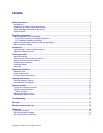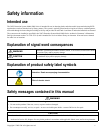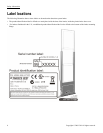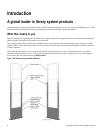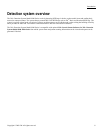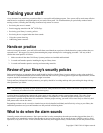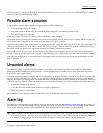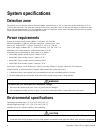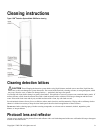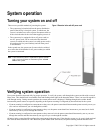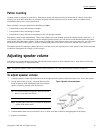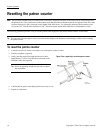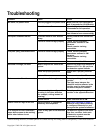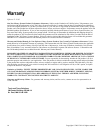
Training your staff
unsecured properly, or the person holding the item that caused the alarm may not even be aware it is in their possession. Always
respond in a positive, nonthreatening manner.
Possible alarm scenarios
In simple terms, a patron might respond to a triggered alarm in either of three ways:
1. The patron might stop in the corridor.
2. The patron might be unaware they have caused the alarm, disregard it, and casually continue to exit.
3. The patron might run for the exit.
In the third scenario, the answer is obvious: follow your library’s policy for theft.
The solution for the first and second scenarios may not be so clear-cut and you will want to exercise courtesy and tact because you
will want the patron’s cooperation and in most cases the patron will want to cooperate.
After asking the patron to return to the counter, you might typically ask “Excuse me, did I forget to check out one of your items?” or
“Did you perhaps pick up one of the library’s books with your own things?” These are courteous questions and they don’t accuse
the patron of theft. Be sure to smile and ask the questions in a friendly, nonthreatening manner.
Process and unsecure all items again. If you discover an item that hasn’t been properly checked out, never accuse the patron of
stealing. Simply act as if the error was an oversight—it more than likely was—and you can resolve the situation easily in this manner.
If the patron is uncooperative or causes the alarm to sound again, follow the policy that your library has established for possible
theft of materials.
Unwanted alarms
Your detection system is virtually free of false alarms. Occasionally your system may alarm and your staff may find that the
patron does not have unauthorized library materials. Unwanted alarms may be caused by tags on items carried into the library
such as books from another library.
Unwanted alarms are generally infrequent and will vary depending on the patrons and the proximity of your library to facilities that
are releasing items containing tags. Because it is not possible to distinguish between unwanted alarms and alarms with potential
item loss, all responses to alarms must be consistent and follow your management policies. If patrons see no response to alarms, the
system becomes less effective. When you decide that a tag on an item from outside your library caused an alarm, follow these steps.
1. Explain the problem to the patron.
2. Verify that all of the patron’s library materials are properly checked out.
3. Allow the patron to exit the library.
Many patrons will learn from the experience and will not carry items that may cause alarms into the library.
Alarm log
The alarm log is used to keep a record of details involving alarms that occur. See the Detection system alarm log form on page 15.
For each alarm, record the information in the log. Keeping this log up-to-date provides a key tool for monitoring system activity.
An up-to-date alarm log provides useful information for library management and your 3M service representative.
Tip: If patron count is a concern, use the Alarm log frequently to record patron count. The patron counter on each lattice is backed
up by battery power so it will not reset to zero anytime power to the system is shut off, disconnected, or otherwise interrupted
(for example, a power outage). For more information about patron counting, see Patron counting on page 11.
Copyright © 2009 3M. All rights reserved.
7



